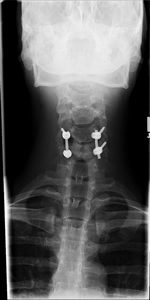Posterior lumbar interbody fusion or PLIF is similar to other multi level fusion techniques. It also involves the addition of a bone graft to an area of the spine so that bone growth between two vertebral elements takes place as a result of a biological response which in turn stops the painful motion at that segment. With the help of this type of spinal fusion patient gets respite from lower back pain as well as neck pain.
This spinal fusion is done by inserting a cage made of allograft bone or synthetic material like PEEK or Titanium directly into the disc space. When this surgical procedure is done through the back it is called the posterior lumbar interbody fusion. This type of surgical procedure often accompanies a posterolateral spine fusion surgery.
Surgical Risks and Complications
 As with other multi level fusion surgeries the main risk under this surgical procedure is the fear of nonunion or the failure to obtain a solid fusion. This is why further back surgery may be needed in order to re-fuse the spine. This type of failure or non union is often found in patients who have a past history of spine surgery or have excess body weight. Moreover, patients who are in the habit of smoking may also suffer from nonunion. The other commonly occurring complications after surgery are infection or bleeding. It is also noticed that patients who have had multiple level fusion surgery may also face with the problem of nonunion.
As with other multi level fusion surgeries the main risk under this surgical procedure is the fear of nonunion or the failure to obtain a solid fusion. This is why further back surgery may be needed in order to re-fuse the spine. This type of failure or non union is often found in patients who have a past history of spine surgery or have excess body weight. Moreover, patients who are in the habit of smoking may also suffer from nonunion. The other commonly occurring complications after surgery are infection or bleeding. It is also noticed that patients who have had multiple level fusion surgery may also face with the problem of nonunion.
Recovering from Posterior Lumbar Interbody Fusion
Recovering from multi level fusion is easier for patients as long as the joint is stable and the patient symptoms as well as health conditions are better. Moreover, in certain cases it is found that the patient has achieved a successful spine fusion but the pain that the patient is feeling does not subside.
